12 Best Kitchen Sink Materials: Pros & Cons (2025 Guide with Pictures)
-
Kristin Hitchcock
- Last updated:
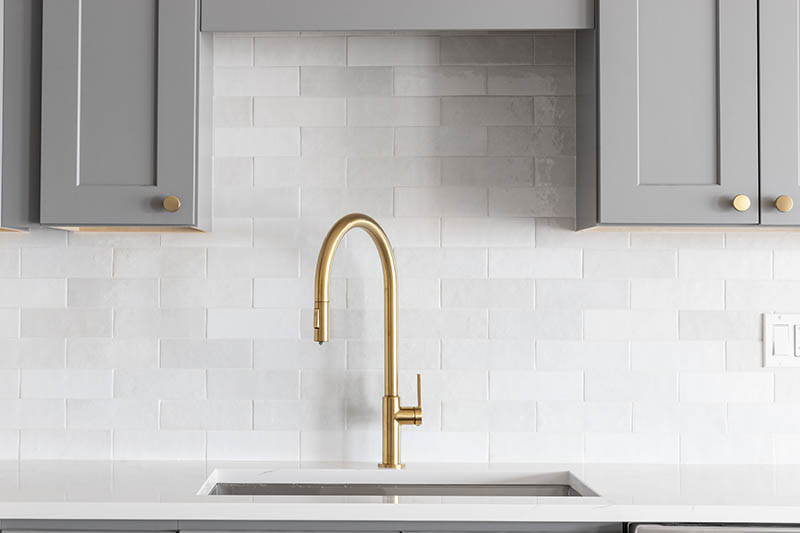
You can find kitchen sinks made with many different materials. Of course, what the sink is made out of does affect the quality and durability of the sink. However, it also affects how the sink looks and functions. Therefore, choosing the right material is vital if you want the correct sink for your needs.
Once upon a time, there were very few materials you could find in kitchen sinks. However, there are now tons of different options that you can choose from.
Not all of these are the best option for every situation, though. Below, we’ll look at these materials to help you choose the best option for your kitchen.
The Top 12 Kitchen Sink Materials
1. Stainless Steel
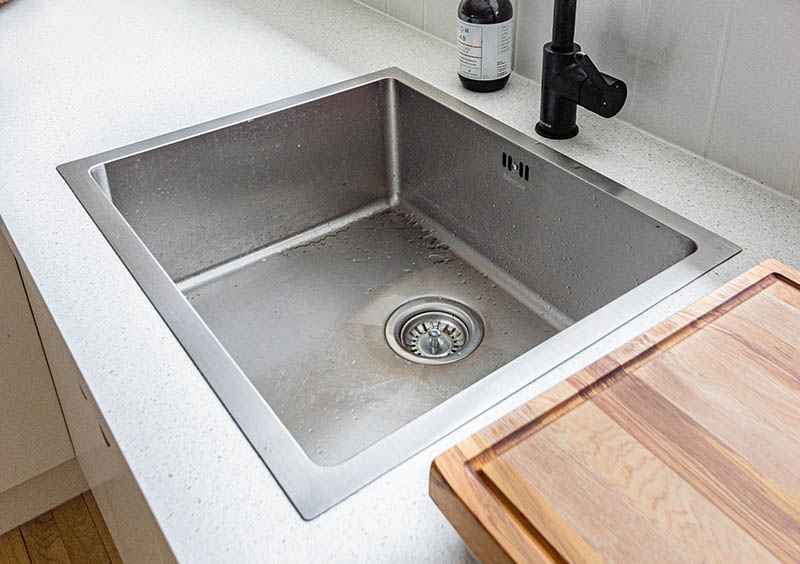
Stainless steel is a very common material for kitchen sinks. You can find stainless steel sinks in just about every style imaginable. They are extremely durable and can withstand heavy pots and pans, as well as scratches from knives and other utensils.
Furthermore, they have antimicrobial properties and don’t show stains easily. Therefore, they are low-maintenance and fairly easy to keep clean. You don’t have to worry so much about possible contamination.
One of the only drawbacks is that this sink may be loud when you drop silverware. Stainless steel does tend to clang quite a bit. It may also show water spots, which can limit its lifespan.
- Durable
- Inexpensive
- Easy to clean
- May show water spots
- Noisy
2. Enameled Steel
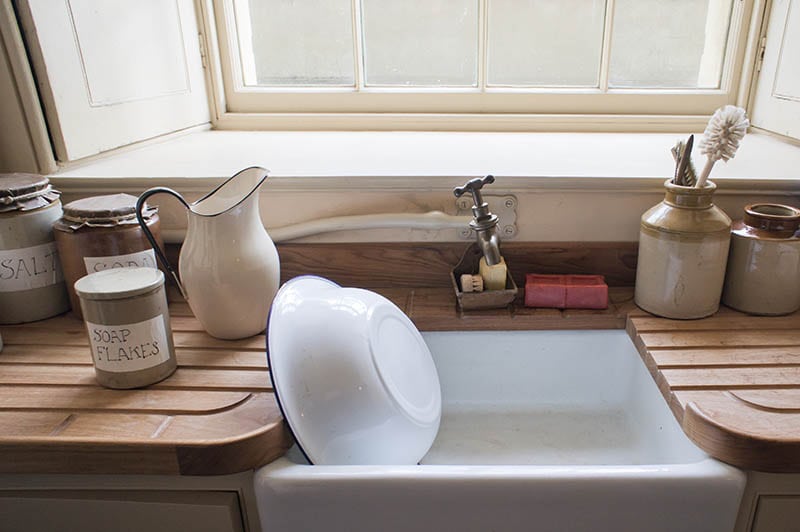
Enameled steel is a stylish option that is also less expensive than most. It is constructed with a steel frame that is covered in enamel. In the end, this leaves you with a durable kitchen sink that is inexpensive. Plus, it is also easy to clean and resistant to damage.
This material is also fairly light so it works well in most cabinet systems. It usually does not require extra reinforcement but it is not quite as durable as other options. It is thinner and more prone to chipping. If the enamel chips, water can sink in through the crack and cause rust.
Therefore, this material has a shorter lifespan than others. However, it can still last for up to 15 years.
- Inexpensive
- Easy to clean
- Stylish
- Prone to chipping
3. Enameled Cast Iron

We’ve started to see more and more cast iron sinks these days. These sinks are extremely durable and can last up to 30 years. However, they are also extremely heavy so you often have to reinforce your cabinets to prevent them from bowing under the weight of the cast iron (which can add to your costs). Plus, this material tends to be quite expensive, anyway.
This material is easy to clean, though it may require more cleaning than other options. It is also prone to scratches from knives and heavy pans, so it can wear down over time. You can place a silicone grid at the bottom of your sink to prevent these scratches, though.
- Very durable
- Versatile
- Very heavy
- Prone to chipping
4. Quartz Composite
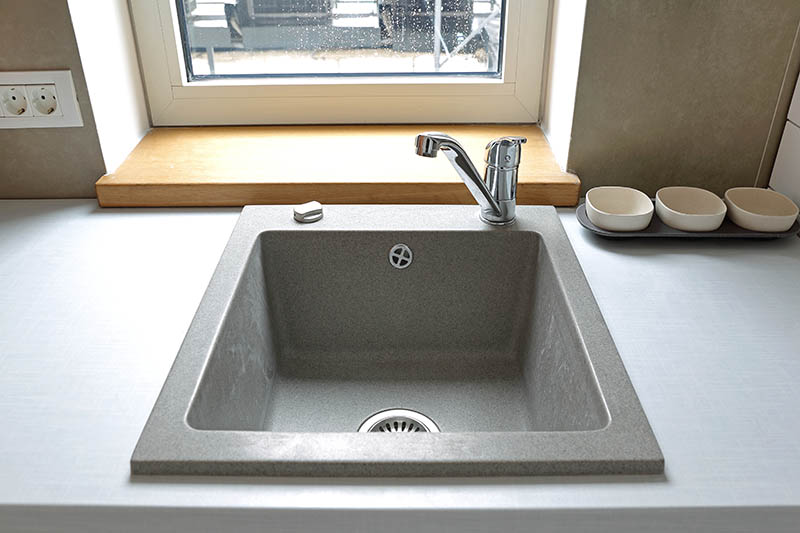
Quartz composite gives a natural look to your sink without the big price tag that other “natural” materials often bring. This material is a mix of natural stone and resin, which gives it the look and feel of natural stone (though the material is completely manmade).
Quartz resists staining because it is nonporous and completely uniform. This quality also helps it remain resistant to chipping and scratching.
The surface of this material is extremely hard and it is extremely durable. However, it can possibly break delicate dishes and glasses if they are dropped too hard.
- Absorbs sound
- Nonporous
- Natural look
- Heat resistant
- Can break dishes
5. Fireclay
Fireclay is clay that has been shaped and fired at a high temperature. In the end, this makes the clay extremely strong and durable. It can also resist rust, scratches, and stains with ease. However, this sink does not have a core that helps keep everything together, so it can shatter rather easily if you drop something heavy into it. If this happens, you’ll have to replace the whole sink.
This isn’t the most durable material (and is also a bit expensive). However, it does have an aesthetic quality that many users like.
- Resistant to most kinds of damage
- Heat resistant
- Shatters somewhat easily
- Can’t be repaired
6. Granite Composite
Granite composite is made from natural granite and acrylic. The granite provides a beautiful, natural look, while the acrylic helps it stick together easily. In the end, this leaves you with a beautiful sink that is also very durable. It is resistant to scratching, chipping, and stains. It is also rather easy to clean and doesn’t require much maintenance.
Unlike similar sinks, granite composite also dampens noise so you’ll hear fewer pots clanging while washing dishes.
However, these sinks are quite heavy. You may need cabinet reinforcements in some cases.
- Resistant to nearly all kinds of damage
- Easy to clean
- Inexpensive
- Heavy
7. Wood
Surprisingly, you can find some wood sinks out there. However, these are rare, largely because they are expensive and require a lot of work. These sinks have a special sealant that helps the wood withstand water, although the sinks still require extra cleaning and special considerations. Plus, they don’t last as long.
Most wooden sinks are made with teak, which is naturally water-resistant, but you can also find some made out of bamboo or similar materials.
- Unique, earthy look
- Absorbs sound
- Expensive
- High-maintenance
8. Stone

Many natural stones are water-resistant. Therefore, when treated correctly, they can be great options for many kitchens. You can use various stones including marble, lava, and granite. Usually, the sink and countertop are carved from the same piece of stone. Therefore, these sinks are unique and hold a lot of their original character.
However, these sinks are extremely heavy and require cabinet reinforcements. They are also extremely expensive, and replacing them can be complicated. While they are resistant to damage, you often have to replace your whole countertop in the case that damage does occur.
- Many types of stones are available
- Natural look
- Long lifespan
- Resistant to damage
- Very expensive
- Heavy
9. Solid Surface
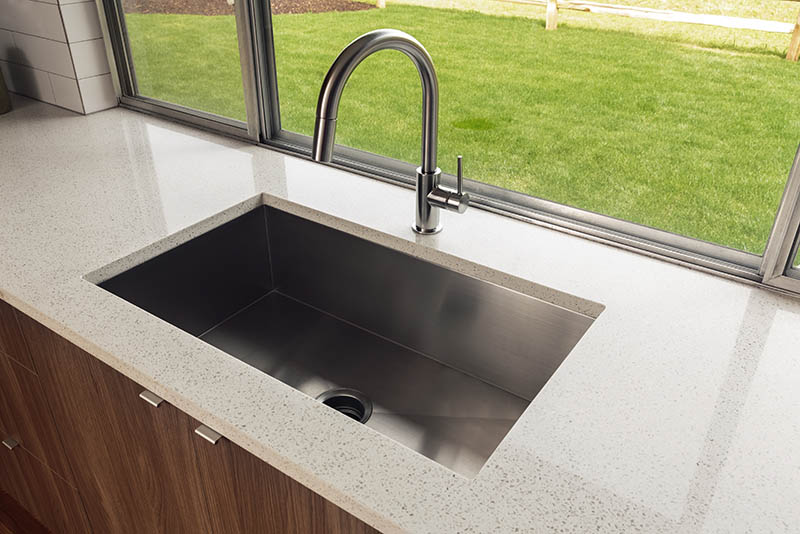
Okay, yes—all sinks are a solid surface. However, in this case, “solid surface” refers to a particular blend of polyester, acrylic, and resin turned into a hard material. These sinks come in nearly every color and design, as they are completely manmade. You can join these sinks seamlessly into solid surface countertops, which eliminates maintenance and makes the design look a bit nicer.
These sinks are resistant to damage, including dents and stains. However, very hot pans and pots can melt this material. Scratches are also possible, but these are easily repaired via sanding and polishing.
- Many designs available
- Can join seamlessly with some countertops
- Inexpensive
- Easy to repair
- Can be melted
- Prone to scratches
10. Copper
If you want a sink that stands out, you should consider purchasing a copper sink. These sinks are often pricier than other options, as they must be handcrafted. However, many consider them a great investment due to their aesthetics and unusualness. Plus, they are also antimicrobial, rust-resistant, and sustainable. (Many are recyclable.)
Their bright, copper color allows you to add a vintage touch to your kitchen. There are many different choices out there, as well, though their overall style is the same.
The natural copper used in their production is sealed to help preserve their shine. Otherwise, they would quickly become dull. You can also select aged options that are sealed to maintain their appearance. Different finishes are also available. Dents can occur, but you can hide them behind a hammered finish.
You’ll want to pay attention to the gauge of the copper sink you purchase, as it will determine the durability. 20-gauge is common but not very durable. Therefore, we recommend 14 gauge, which is thicker.
- Very durable
- Naturally antimicrobial
- Sustainable
- Susceptible to color changes
- Requires more care (such as regular waxing)
11. Acrylic
Acrylic sinks come in many different shapes and styles so if you’re picky about what your sink looks like, you may want to look at some acrylic options. These simple sinks are also inexpensive and easy to clean. They’re just a basic sink that works. Their surface is nonporous, so you don’t have to worry about coloring issues. They are also durable and pretty resistant to mildew.
However, at the end of the day, these sinks are just basic plastic so they can be easily scratched by sharp objects and abrasive cleaners. Sometimes, they can even be burned by pans. Therefore, they aren’t the most durable option out there. However, they can be repaired with car buffing kits, so fixing any damage is often pretty straightforward.
- Inexpensive
- Easy to care for
- Varied styles
- Not very durable
- Can be burned by pots and pans
12. Vitreous China
This timeless material is a great option for those who want more style to their kitchen sink. It is made by covering china with an enamel finish, which makes it stronger and shinier. This type of material is cheaper and extremely durable. It looks a lot like porcelain, though, which makes it a possible choice for commercial bathrooms and high-use areas.
Vitreous china can withstand the wear and tear of washing dishes thanks to its coating. It can also be extremely easy to install, as it is very light.
- Affordable
- Easy to clean
- Lightweight
- Breaks fairly easily
Conclusion
There are tons of different sink materials you can choose from. We recommend researching your options thoroughly to choose the best one for you. You can choose something completely practical, like stainless steel, or something that looks a bit more stylish. Either way, you have plenty of options to choose from, so finding one that works for you shouldn’t be too difficult.
Featured Image Credit: Hendrickson Photography, Shutterstock
Contents
